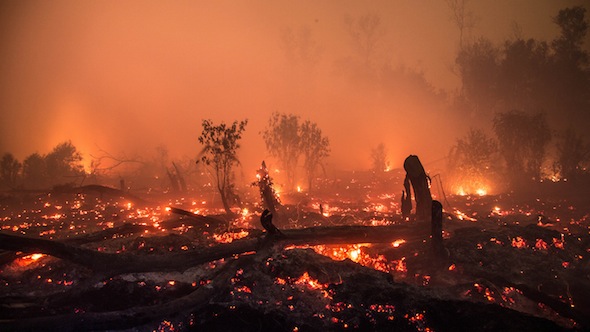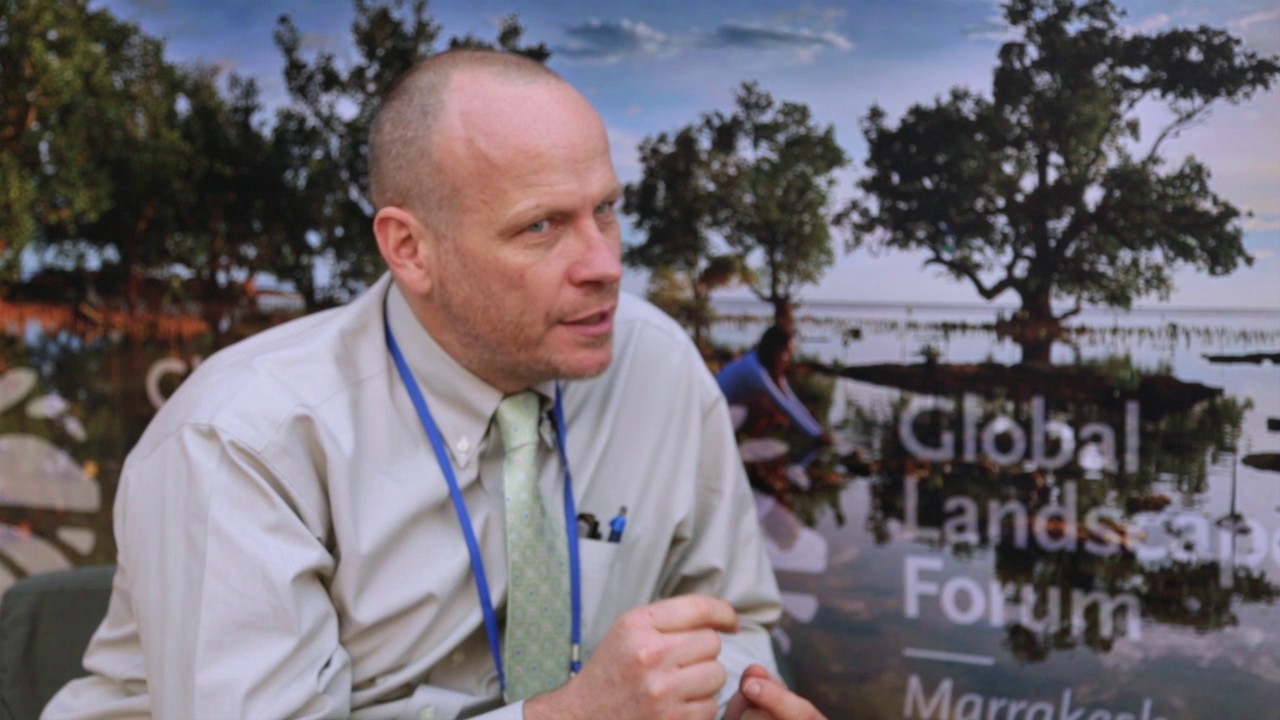Nazir Foead is the head of Indonesia’s newly established Peatland Restoration Agency (BRG). The agency was appointed by President Joko Widodo in January 2016, with the task of restoring 2 million hectares of the country’s peatland within five years. Nazir spoke on the sidelines of the Global Landscapes Forum in Marrakesh about the need to take a landscape approach to restoring degraded peatland in Indonesia.
Tell me about the mission of the Peatland Restoration Agency.
After the massive fires we had in 2015, we realized that it’s almost impossible to put out fires on peatland. So the best strategy is, of course, to prevent the fires happening in the first place on peatland. And that would mean that we need to recognize that a lot of our peatland has been drained or degraded. So we need to restore the ecological and hydrological functions of peatland, to keep it wet and moist, even during the dry season, so it will not easily burn. To prevent peat fires. And the task of the Peatland Restoration Agency is to restore this drained peatland.
And how do you think your work fits within a landscape approach?
First, we’re looking at a scale – we look at what we call a ‘peatland hydrological landscape’. So it looks like a watershed, but the connection of this one big landscape is the water ecosystems in this peatland and in nearby non-peat, even the mineral soils, which are hydrologically affected by the peatlands. So that’s one big landscape. I think that fits very well with the Global Landscapes initiative. Second, if we look at this big landscape, hundreds of thousands of hectares, we have multiple stakeholders and also land owners — so land managers — including the local government. Even the central government is divided into several sectors with authority over land – [Ministries for] Agriculture, Public Works or our Interior Ministry, as well as for the Environment and Forestry.
We need a lot of partners to work with us.
What made you want to participate today in the Global Landscapes Forum?
The two-million-hectare target is very ambitious. We understand that the keyword for us to deliver later, four or five years from now, is cooperation. We need a lot of partners to work with us. So any partners who have an interest or program working in cooperation from the landscape level, we will see that as a very important stakeholder and partner to work with, including the Global Landscapes Forum.
How can research organizations, like CIFOR, help you reach your goal?
First, in designing the restoration activities, we need very strong science. Including some science-based experience and leaders. After implementing that I think we need constant monitoring, scientifically done, and [for scientists to] provide inputs if our restoration techniques and technologies need to improve, for the next years and so on. So constant cooperation with research institutes on evaluating and checking how it is impacting the hydrological functioning of the landscape, I think, is one of the major issues.
This is part of a series of interviews from the 2016 Global Landscapes Forum: Climate Action for Sustainable Development in Marrakesh, Morocco
We want you to share Forests News content, which is licensed under Creative Commons Attribution-NonCommercial-ShareAlike 4.0 International (CC BY-NC-SA 4.0). This means you are free to redistribute our material for non-commercial purposes. All we ask is that you give Forests News appropriate credit and link to the original Forests News content, indicate if changes were made, and distribute your contributions under the same Creative Commons license. You must notify Forests News if you repost, reprint or reuse our materials by contacting forestsnews@cifor-icraf.org.

